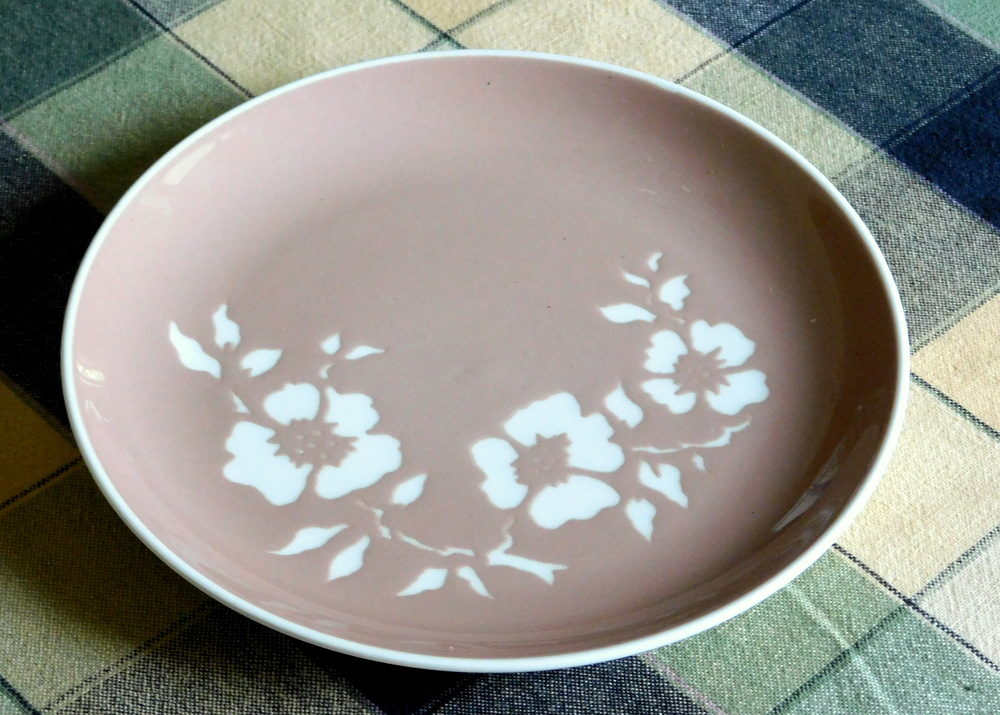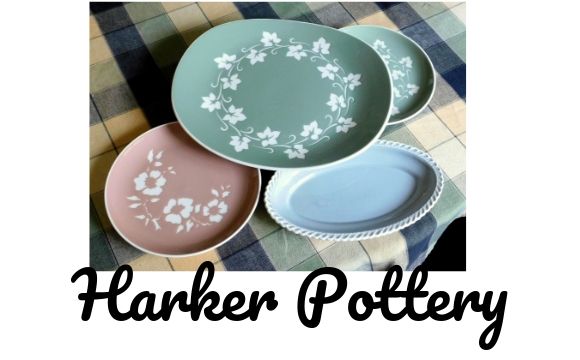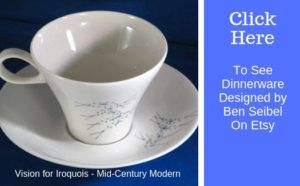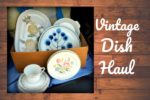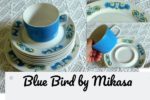Harkerware is a beautiful vintage dinnerware that I notice as soon as I see it.
I especially look for the pieces with creamy white motifs on a color background. They have a special charm in my book.
I don’t see it that often, unfortunately.
Harker was originally made in East Liverpool, Ohio, starting in 1840, and relocated to West Virginia in the 1930s. The company closed in 1972. That makes the dishes vintage, a few decades over!
Many of these pieces are fired at a lower temperature, which is a benefit when it comes to color and decoration, but not when it comes to durability. Earthenware tends to craze and chip easier than wares made from porcelain and stoneware.
That makes condition and care more important if you want to use these dishes. I prefer to have them for display. Then crazing won’t matter, or even chips if you can hide them in a dish arrangement.
I pulled out a few pieces from my little collection:
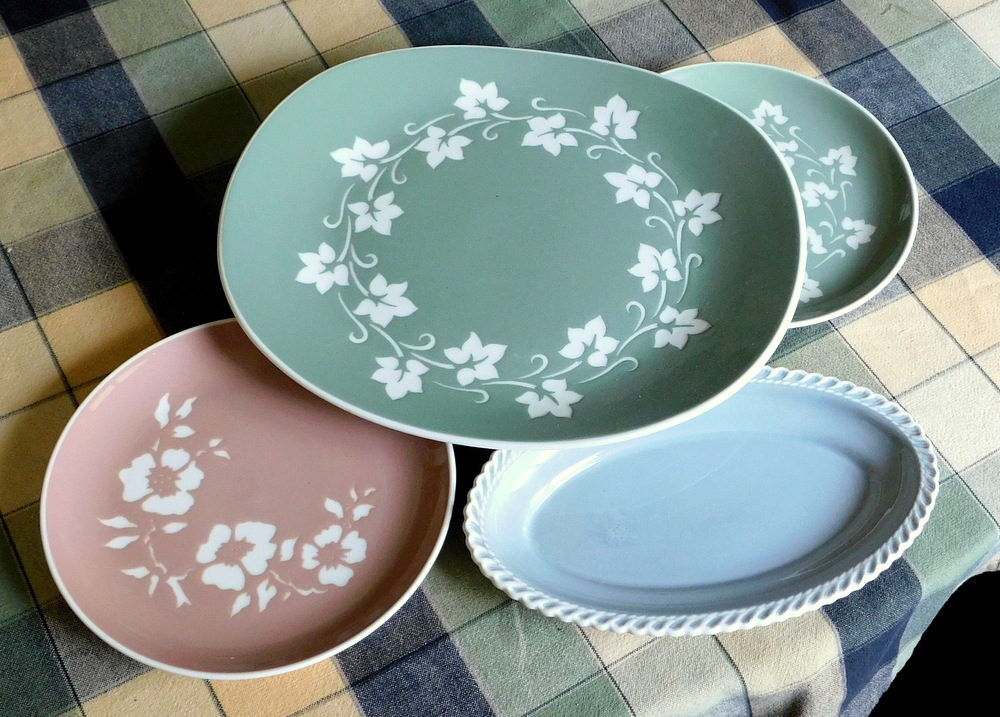
Platter pattern, 2 salad plates, relish or underplate for gravy boat with the gadroon edge.
Platter and one salad plate in the Ivy Wreath pattern (green and white)
Salad plate in the Dogwood Tan pattern (peachy tan and creamy white)
Underplate for a gravy boat in the Chesterton Light Gray pattern (This one was also made in a light blue, celadon green, pink cocoa, charcoal and olive green)
The term “gadroon” describes an edge on molded pieces that looks like twisted rope. It gives pieces a fancier look without adding metallics to a plate’s edge.
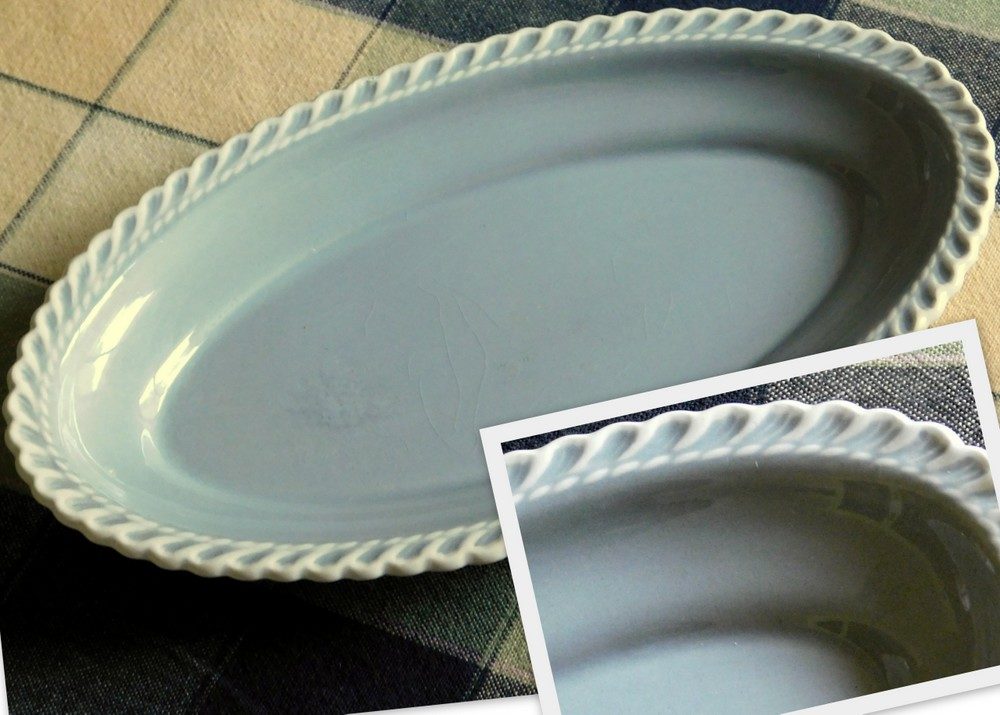
There’s a blue and white pattern called Cameo (shell shape) that I’ve seen in books, and would love to find in a thrift store someday.
The dinnerware is not generally expensive. I’m sure there are some collectors, but not as many as some other companies and patterns probably have.
Harker is a true American classic.
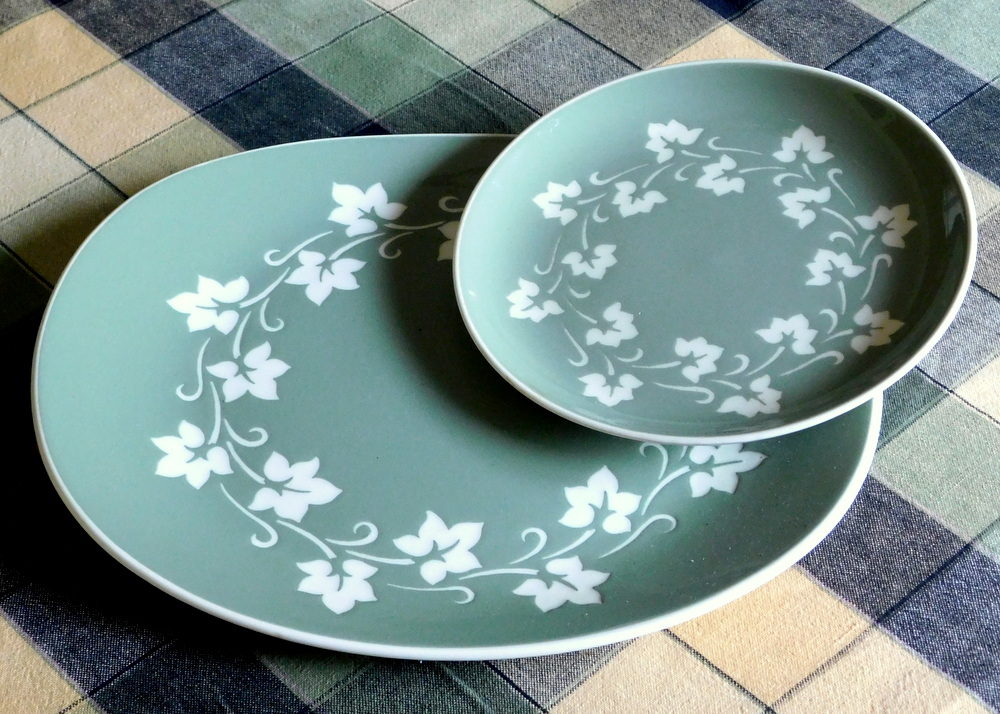
If you’re looking to give your home décor a classy look that echoes the 1950s, look for some Harkerware the next time you’re out and about shopping for vintage dishes.
